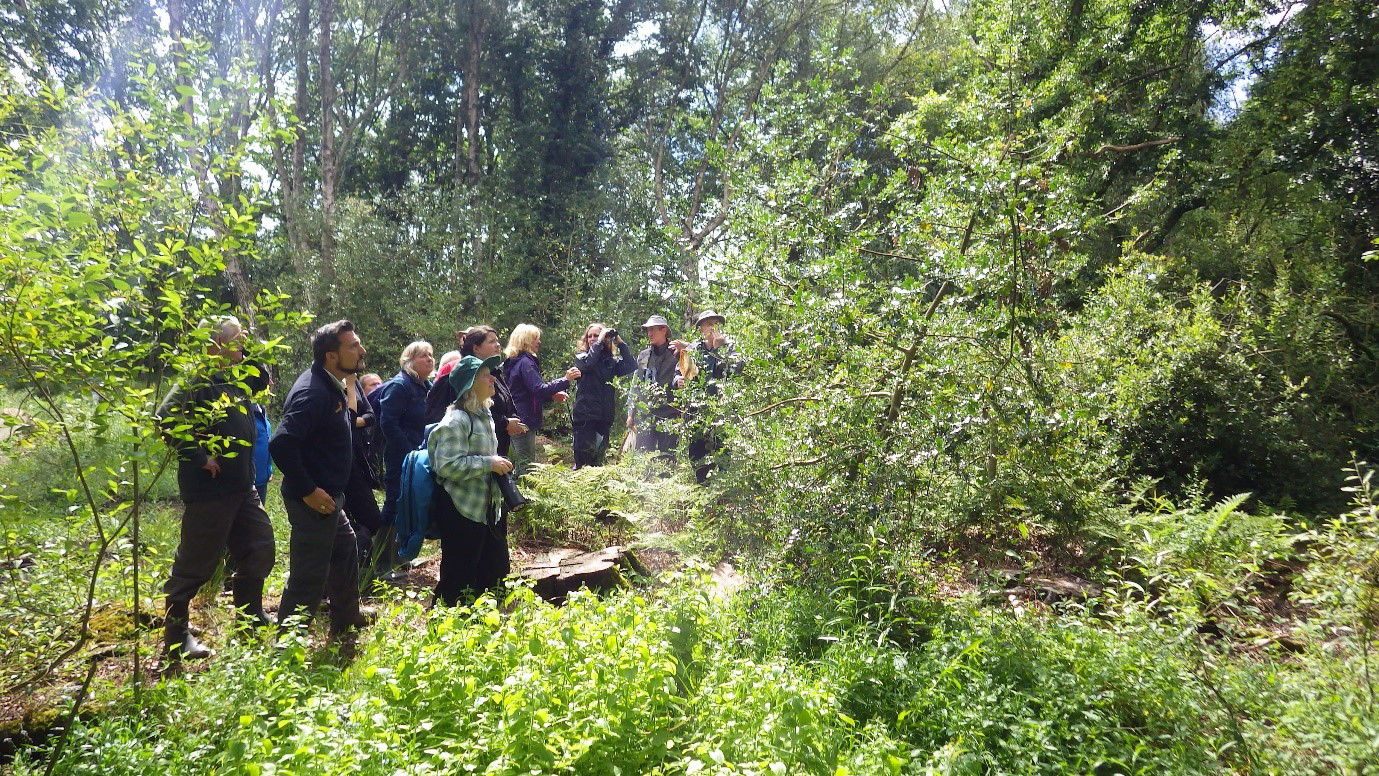Flagship Focus: Sound Common 2017
18th October 2017
Our Flagship Focus series continues with an exploration of Sound Common Flagship Pond site with project officer Anne

Sound Common is a wonderful little Local Nature Reserve. It is nestled in the largely flat landscape of the Cheshire Plain, approximately three miles south-west of Nantwich. It supports a mosaic of habitats including woodland, scrub, acidic and neutral grassland, several areas of damp heath, and many permanent and seasonal pools. As many the pools result from the localised extraction of sand, they have a different ecology from the more common marl-pits, glacial kettle holes and salt-subsidence flashes of the Cheshire Plain.

Designated as a Site of Special Scientific Interest (SSSI) in 1963, this 4.8 hectare site supports a rich variety of pond wildlife including the nationally rare Pond Mud Snail (Omphiscola glagra), Great Crested Newts (Triturus cristatus), and the rather beautiful aquatic plant Water Violet (Hottonia palustris). Sound Common is also a great site for dragonflies and damselflies – around fifteen species have been seen over the site, including the first record in Cheshire for Migrant Hawker (Aeshna mixta).
Sound Common became one of our Flagship Pond sites mainly for its population of the rather elegant Pond Mud Snail, which is a rare and declining across the country. Historically, this species was widespread throughout lowland areas of England and Wales, but has undergone a marked decline in the last 50 years and it is now classified as Near Threatened (IUCN). The Pond Mud Snail prefers ponds with low calcium, nutrient poor water on acidic sandy or gravelly soils, especially within unimproved pasture and heathland. Pond Mud Snails can survive drought conditions, and so typically occur in habitats such as temporary ponds, ditches and seepages that dry up in summer.
We were therefore keen to find out if it was still present on Sound Common. Following on from the PondNet Mud Snail training we carried out in Merseyside late in 2015, two of our dedicated volunteers Amanda Barber and Simon Stickland headed to Sound on a mission to find some. Happily, after much searching, a snail was indeed found, but not the large population we had hoped for.
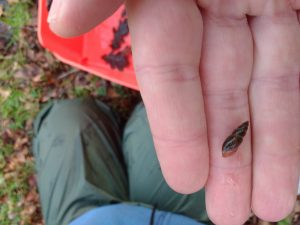
The find piqued the interest of the local residents and wildlife enthusiasts who had started to work with Cheshire East Council, who manage the reserve. We then organised a site specific Mud Snail training session to encourage local people to search for this tiny snail across the site in September 2016. We had a lovely day but sadly no snails were found and subsequent surveys carried out by the newly trained volunteers failed to find any signs.
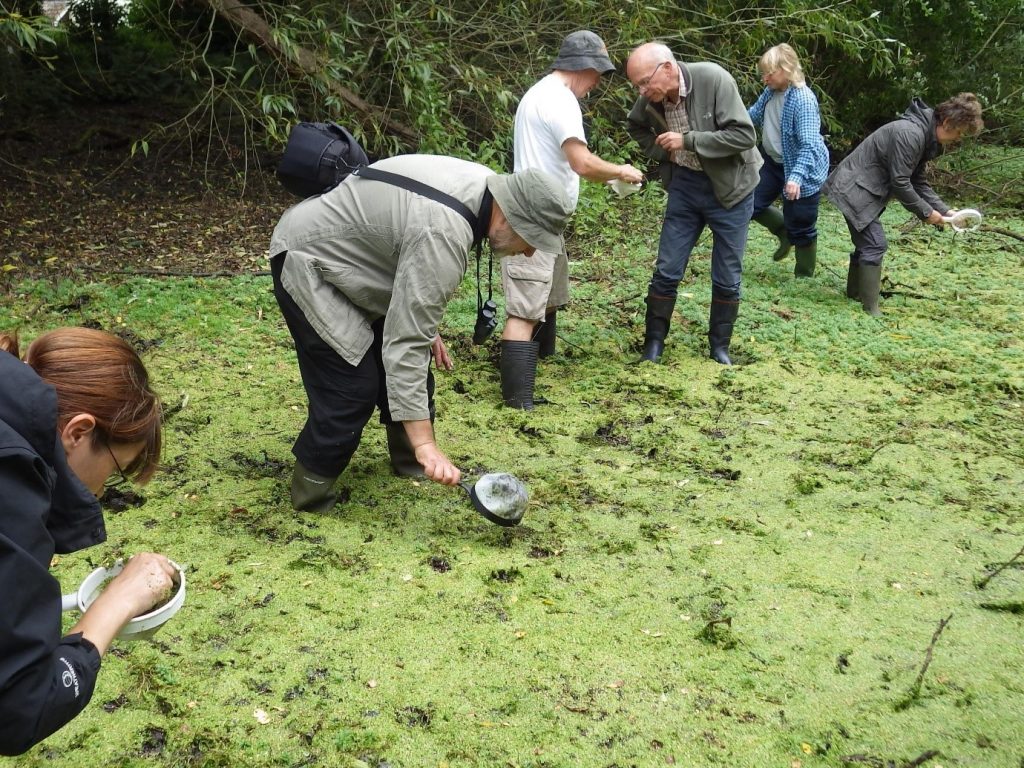
Action was needed to improve the pond habitat for the snails and the enthusiastic local volunteers pitched in to clear scrub from the ‘Asphodel Pond’ where Amanda and Simon had found the lone specimen.
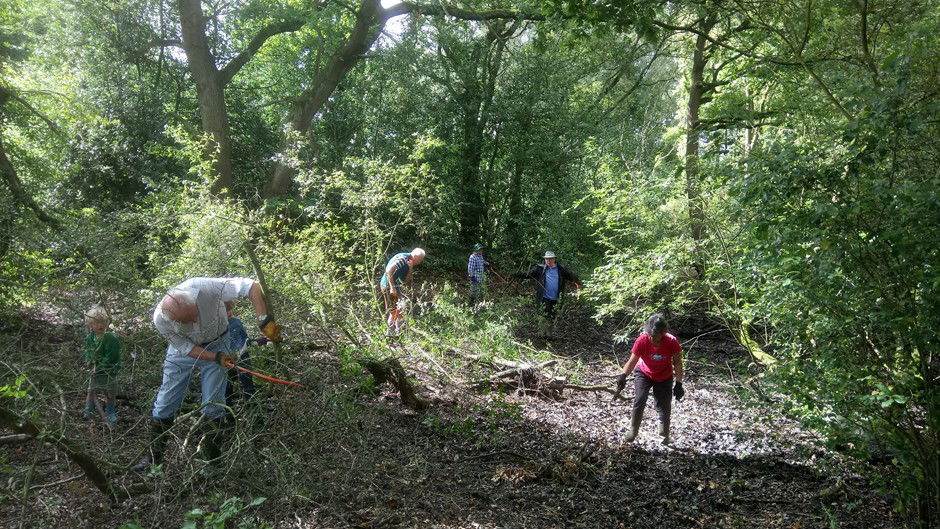
Although the water level reduced greatly during dry periods (making it tricky to survey for snails!) we didn’t want to dredge the pond to make it deeper. This might have been detrimental to any remaining snails lying dormant in the soft mud. The pond also supported a really good population of Water Violet which was often seen carpeting the pond.


We decided instead to create new habitat suitable for mud snail close to ‘Asphodel Pond’. Maps indicated that there were several ponds close by which had virtually been lost to succession and currently remained as mainly dry depressions, over shaded by trees and filled with leaf litter. Ideal candidates for restoration.

In September 2017, local contractors were commissioned to help restore these ponds. So with the help of chainsaws and diggers, the woodland canopy was opened up to gain more light and the dry depressions where carefully dug out and sculpted, to create new habitat for our beloved Mud Snails and hopefully other aquatic plants and animals too.
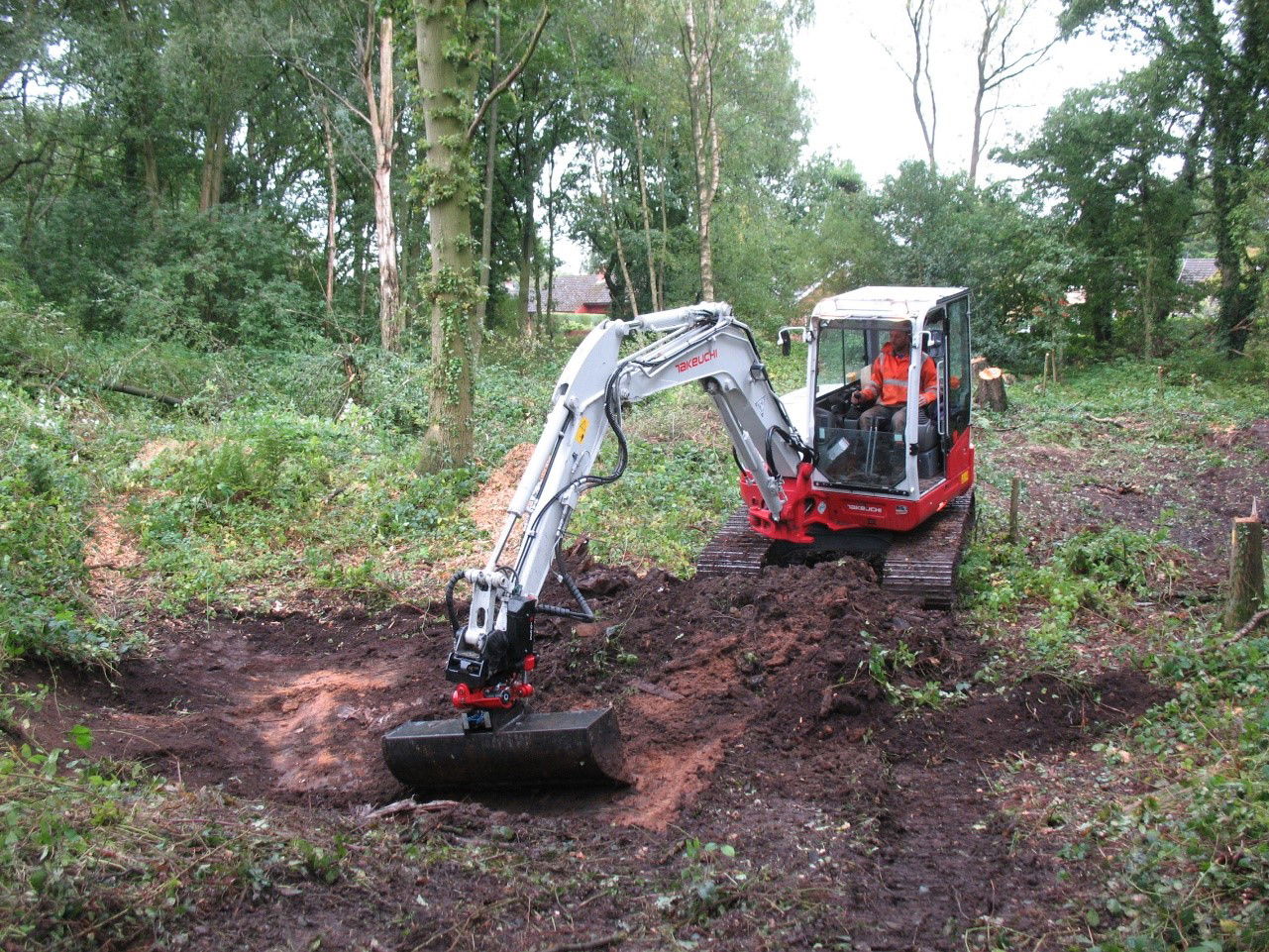
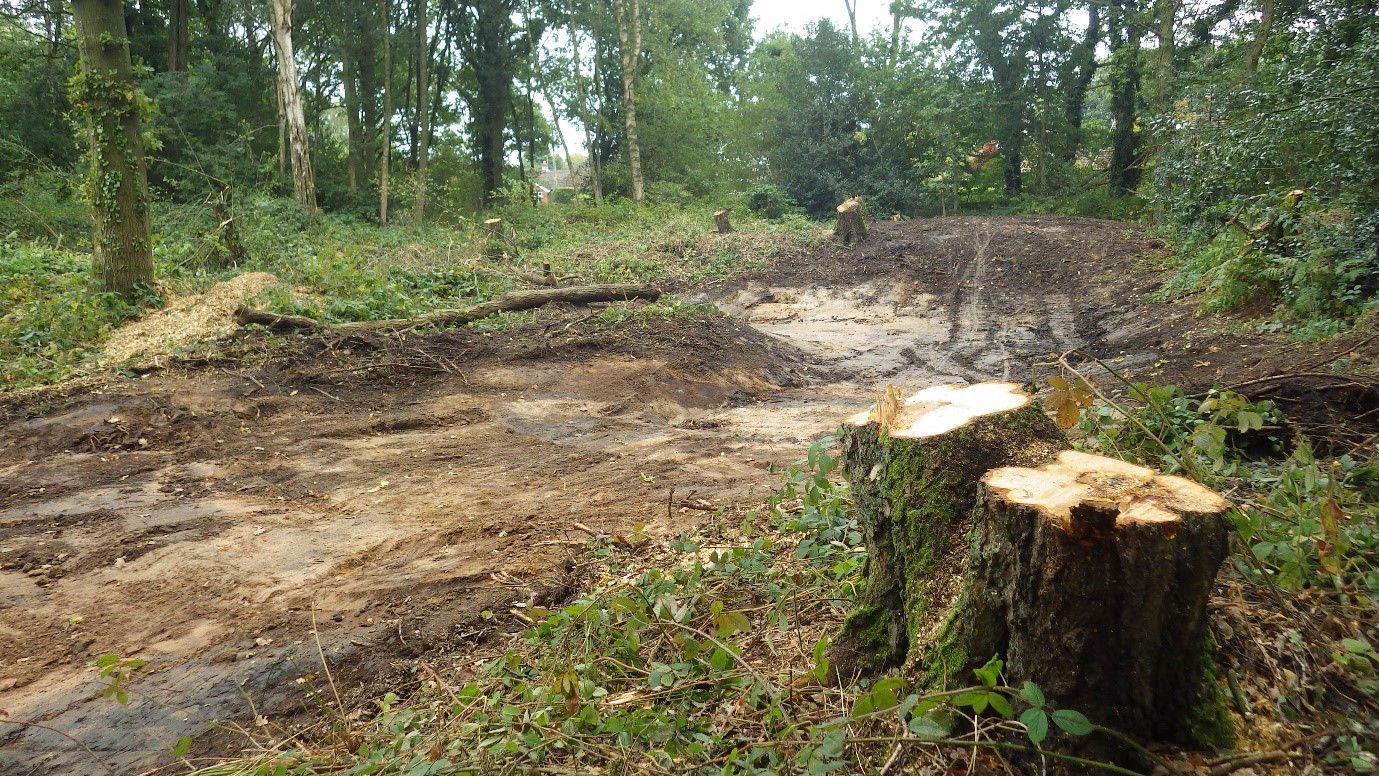
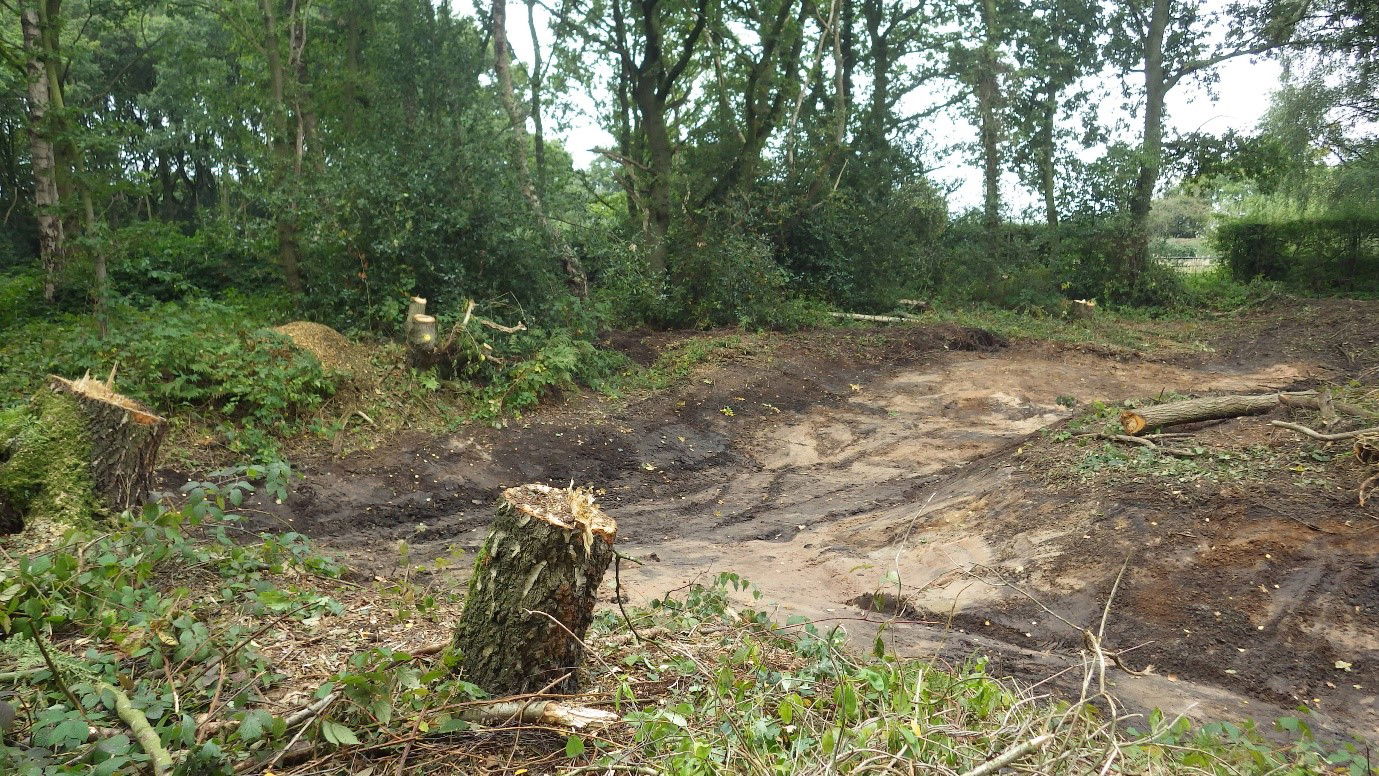
As well as searching for and creating new habitat for Mud Snail, we were also keen to get volunteers interested in recording one of the other wildlife Sound Commmon is well known for: dragonflies and damselflies. For this we enlisted the help of local dragonfly enthusiast Jeff Clarke to help us run a training session and site walk in the summer of 2017. We had a really good turn out and hopefully this has spurred the local volunteers get even more involved with this wonderful site and the fantastic wildlife that inhabits it, both aquatic and terrestrial!
